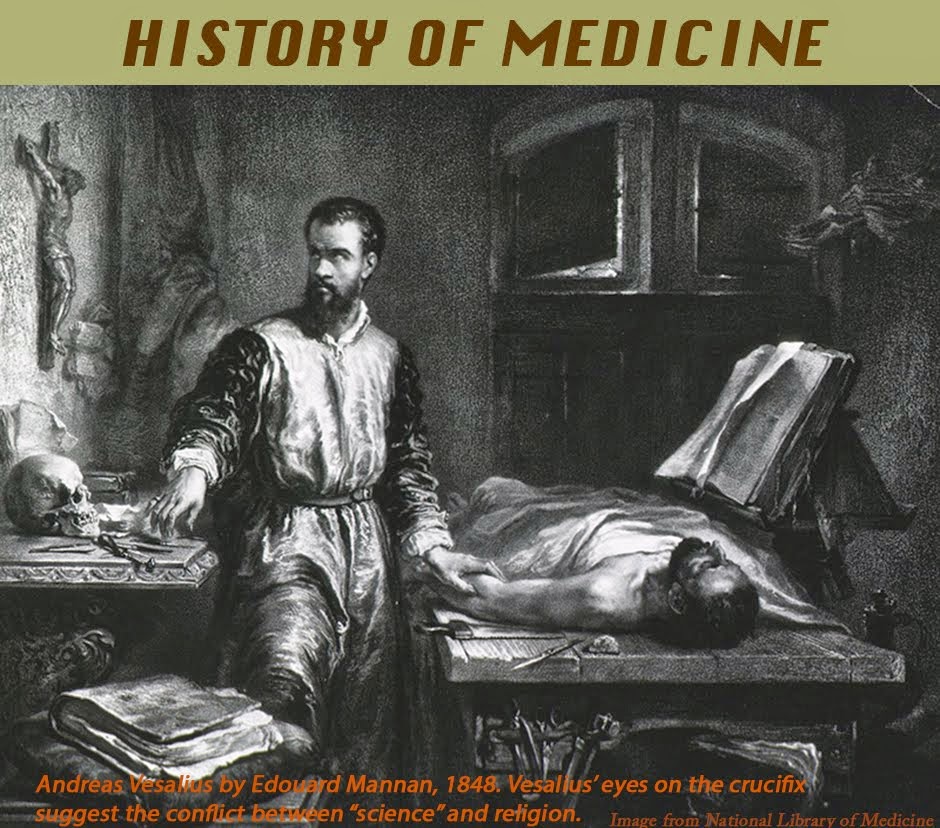Theodor Kocher and the Birth of Endocrinology
At one time almost
everyone in the valleys of Switzerland was afflicted with goiter. Mark Twain
remarked that the two principle sights in Switzerland were Mont Blanc and
goiter. Large goiters were burdensome and could impinge on the trachea,
impairing
breathing. But the medical world was ignorant of the thyroid's function. Claude
Bernard declared in 1879, well after surgeons started removing the gland, that
nothing was known of its importance. Iodine was perceived as helpful for goiter
by some, but little used. Not surprisingly it was in Switzerland where progress was made.
 |
| goiter patient, from and side (from Wellcome Library) |
Theodor Kocher, a Swiss, played a leading role in revealing the impact of the thyroid on human physiology. His surgical skills and wide knowledge were legendary and attracted students
from around the globe.
He was born in Bern in 1841. After medical school he decided
on a surgical career. He
rose quickly to be Professor of Surgery at Bern University (at age 31) and
remained there for the rest of his career. His influence was enormous. Only a
partial list of achievements would include: rapid adoption of Listerism,
inventing the “Kocher maneuver” for reducing shoulder dislocations, using physiological
saline to combat shock (later taken up by George Crile), and introduction of
“Kocher clamps” for hemostasis. His neurosurgical researches greatly influenced
Harvey Cushing and his deliberate, careful surgical technique helped cement a
friendship with William Halstead. He published the first complete chart of
human dermatomes (1896). Between 1909 and 1914 an average of 40 Americans
visited his clinic every year. His textbook of surgery went through five
editions and was translated into six languages. His discoveries concerning the
thyroid gland earned him a Nobel Prize, though not without heartache and strife.
 |
| Theodor Kocher (from NIH via Wikipedia) |
Removal of goiter by
surgery had been risky. The famous Theodor Billroth had removed numerous ones,
but with frequent
complications and significant mortality. But with careful study of
anatomy and adherence to asepsis Kocher managed to render thyroid removal a
safe procedure, using a horizontal incision whose scar was barely visible. He performed the operation frequently.
 |
| Goiter removal, from Kocher's Surgical Text, 2nd edition (Hathi Trust) |
In the fall of 1882,
at a Congress in Geneva, Kocher met Jaques-Louis Reverdin, a Geneva-based
surgeon, who had noted that two of his own thyroidectomized patients had developed
features of cretinism. He asked Kocher if he had observed the same. Kocher
abruptly realized that he had - once. A local practitioner had informed him
eight years earlier that an eleven-year-old girl had become sullen and
zombie-like after losing her goiter. Kocher tracked her down and was stunned to
find the “ugly appearance of a half-idiot” before him. He halted further
thyroidectomies, contacted former patients, and turned up many with hypothyroid
features - but only those with total loss of thyroid tissue. Though the record is unclear he must
have been shaken by the damage he had inflicted. He reported the findings in a
long paper in 1883.
 |
| Jacques-Louis Revedin 9from Wikipedia) |
Reverdin referred to
the clinical picture of his patients as “myxoedéme opératoire”, after the term
“myxoedema” coined a few years before (1877) by William Ord in England for
patients
with adult onset of cretinism and atrophied thyroid glands. Reverdin
also acknowledged William Gull’s earlier description of the same syndrome.
Kocher invented the name “cachexia strumipriva” and initially thought the
syndrome due to oxygen insufficiency related to removal of the thyroid and
adjacent vasculature.
 |
| William Ord (from Wellcome Library) |
Kocher attempted
transplanting thyroid tissue to improve his sluggish patients, noted initial
improvement, but was discouraged that it was transient. He tried isolating an
active substance from thyroid tissue, in vain. In England George Murray gave
injections of thyroid extract, with positive results, then switched to oral
administration of thyroid extract, also effective. Trial and error led to a
reasonably accurate dosage. Kocher and others adopted similar replacement
therapy, starting with thyroid tissue spread on bread much as caviar would be,
and moving on to extract.
Kocher was awarded
the Nobel Prize in 1909, the first surgeon to receive one, for contributions to
the physiology, pathology, and surgery of the thyroid. In his acceptance speech
he ungenerously neglected the work of Ord and Gull that had clearly described
myxoedema (he had actually corresponded with Ord on the subject) and failed to
admit Revedin’s priority (Revedin is remembered also for performing the first
skin allotransplant).
But Kocher’s
achievements should not be diminished. He went on to perform over 4000
thyroidectomies (partial), with excellent results. In addition to the
accomplishments noted above he pioneered new techniques in gallbladder and
stomach surgery, neurosurgery, and head and neck surgery. He taught a whole
generation of surgeons and left a great imprint on American surgery. And his
thyroid work ushered in a new medical specialty – endocrinology.
Sources
used:
World
J Surgery 2000, 24:2-9. (Biography)
J
Roy Soc Med 2014, 107: 376-7 (Biography)
J
Roy Soc Med 2011, 104: 129-32 ( thyroid work)
BMJ
Sept 29, 1923, pp 560-1 (transplants)
Nobel
Lecture, available at: http://www.nobelprize.org/nobel_prizes/medicine/laureates/1909/kocher-lecture.html
Wellbourn, R B: The History of Endocrine Surgery. 1990
Tröler,
U. Der Nobelpreisträger Theodor Kocher,
1841-1917. 1984
(to leave a comment click on "no comments" and a box will come up)
(to subscribe click in the email box or send request to gfrierson@gmail.com)
